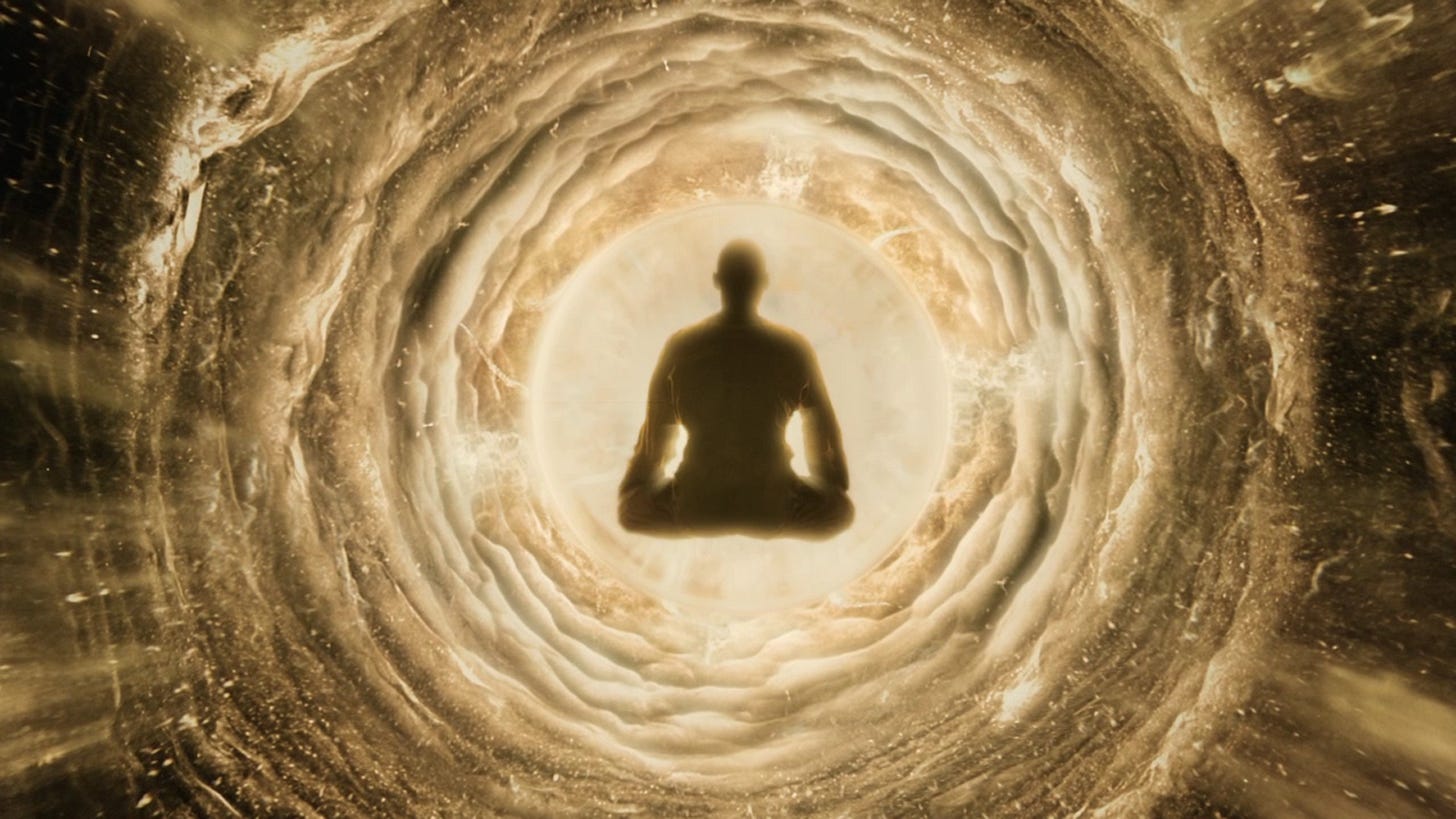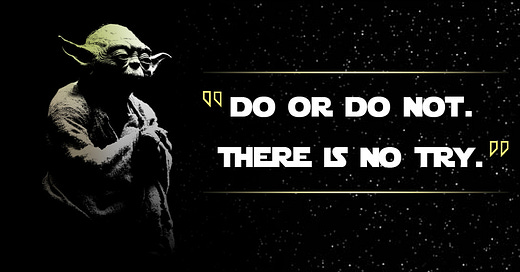When I was a young kid, my first introduction to meditation came in a Tang Soo Do class (Tang Soo Do is a Korean martial art based on Japanese Shotokan and it’s also the progenitor of Taekwondo).
At the beginning and end of every class at the school where I trained then, the formal process included moments where students were told to sit down, criss-cross their legs, close their eyes, and meditate during a short moment of silence. It’s a lovely concept, and I personally still like to have a little meditation before and after my training and workouts. But there were some major flaws in the approach of the teachers I had in our martial arts school when I was a kid: they didn’t really know how to meditate and weren’t qualified to serve as meditation instructors. They were just repeating the language and the structure they themselves had been taught.
It was all certainly well-intentioned, but I’d say it wasn’t really all that meditative or thoughtful at all.
Often there was no guidance outside of the command to meditate. We’d have a room full of 20 or 30 kids all fidgeting about, peeking open eyes to see who else was doing the same, picking at their toenails, or just lost in the flood of thoughts in their heads. I doubt anyone in the kids classes were really being meditative in those moments, and even for the adult classes the lack of guidance in a society where learning how to meditate is not common likely led to most of the students just sitting in silence while their minds drifted around.
When there was guidance, it could sometimes be helpful. We had some teachers who provided some ideas for pondering or would even offer a visualization for focus. That at least made the attempt far more meditative. But one thing some teachers would regularly say that bothered me as a kid—and I still find problematic now—was the command to “clear your mind”.
Being told to clear your mind is one of the worst possible instructions for someone entering meditation—especially a child.
It sets up a false expectation: that to meditate means to have a blank or clear mind—that success in meditation is measured by a kind of internal silence devoid of thought, sensation, or emotion. It presumes that we can just shut off the thought process and reach deeper states of meditative transcendence without any training at all. And saying “clear your mind” is a great command to cause someone to do the exact opposite. For many of us in those classes, trying to clear our minds was tantamount to driving our minds into a more cacophonous state of random thoughts.
This misunderstanding not only discouraged me from exploring meditation for many years, but I think the mindset that suggests that meditation is a simple process where you should be able to just close your eyes and be in a deep meditation has caused many people anxiety about the practice and has led to less people meditating.
Today, we live in a world of relentless stimulation. Notifications, headlines, scrolling feeds, and dopamine-driven algorithms have wired our attention to flicker, fracture, and fragment. The digital world almost demands anxiety from us, which is why we need meditative and thoughtful practices now more than ever.
In our modern world, the very act of focusing has become revolutionary.
But to truly learn focus through practice requires ditching clichéd and misguided concepts like “trying to clear your mind.”
If you want to practice meditation, then don’t try to clear your mind. That’s futile. Trying to clear your mind is like trying to force yourself to fall asleep by trying really hard to be asleep. You’d have more success trying to tell a river to stop flowing.
Meditation is a process of attending to our minds, our physical spaces, and what we are within by living in a more intentional awareness. When we meditate, we turn into our experience, rather than trying to turn away from it. We live in it.
Might sound a little “woo-y,” but there is some method to the madness, and our ancestors from around the planet have cultivated skills and techniques over millennia that can help us learn the method.
Meditation Is Not the Erasure of Thought
There are lots of definitions and descriptions of meditation. Generally speaking, there is no one single approach to meditation—it’s rather a range of practices and techniques that people have developed to achieve intentional control of our awareness.
A decent approach to a definition from the paper Overview: Clinical and Physiological Comparison of Meditation with Other Self-Control Strategies, by Deane Shapiro in 1982 (and later published as a book chapter in Meditation: Classic And Contemporary Perspectives in 1984), states the following:
“…Meditation refers to a family of techniques which have in common a conscious attempt to focus attention in a nonanalytical way and an attempt not to dwell on discursive, ruminating thought.”

Perhaps a more helpful way to understand meditation for many people is to just to think of it as a practice of attention.
Sometimes meditative practice involves directing your focus or concentration. You may be concentrating on your breath and the way it feels as it moves in and out of your body. You might place your focus in repeating a certain phrase or mantra in your mind, or place your focus on an object in the room with you like a candle flame, a picture, or some other object. You might focus on a specific part of your body, noticing how it feels in that specific area, or you might do what’s called a “body scan” where you move your focus through all of the parts of your body. Sometimes the focus can be placed in religious concepts like prayer or even in chanting or singing out loud.
Some other meditative practices include what’s often called “open monitoring” or “open awareness.” In these practices, you’re often in a still posture while actively monitoring the thoughts that come into your mind or the sensations taking place within and around your body, but you’re approaching the techniques with a non-reactive and non-judgemental awareness. Many people know of these techniques collectively as mindfulness, but there are a wide range of techniques. For instance, Vipassana practice, rooted in Theravāda Buddhism, trains practitioners to observe bodily sensations and mental formations as transient phenomena (like waves passing by or clouds in the sky coming and going).
Generally, when you’re meditating, you’re not trying to empty your mind and your focus, but to either direct it or notice it—gently, patiently, and without judgment. You may focus on a specific kind of thought or follow a visualization to see where it leads you mentally. Or you may just sit and notice what kinds of thoughts come and go without allowing yourself to actively attend to any of them.

Even though it’s commonly thought that meditation must be done in a seated pose or with the eyes closed, not all meditation requires such stillness. In fact, for many people—especially those dealing with trauma or chronic anxiety—sitting quietly can be overwhelming or even re-traumatizing, especially without the support of a guide or teacher. In such cases, movement can offer a path into presence and the practice. Walking meditation, practiced in Zen and Theravāda traditions, invites attention into each footstep, breath, and sway of the body. In modern mindfulness programs, mindful movement—including yoga or tai chi—is used to bring awareness into the body and the world around us. Even strength training, martial arts, and dance can become meditative when practiced with full presence. These are not escapes from thought but avenues into embodied awareness—each muscle contraction, joint angle, and breath can be places for focus or monitoring.
While I personally think it can be beneficial for everyone to practice traditional forms of meditation in stillness and contemplation, there’s a lot to be said for taking the techniques of the practice and applying them to our everyday lives. Finding focus on someone when they’re speaking so that you can really hear what they’re saying; being able to notice the onslaught of distractions from screens, audio and video ads, the hustle and bustle of the world, and just allow those things to come and go without attending to them; and, especially, being able to find pause between stimulus and response—stretching out time through awareness before responding to a threat or an insult or some perceived injustice to see the issue more fully—all of these are practically the superpowers offered to us mortal beings through training and meditative practice.
A Civilization in Need of Centering
Research consistently shows the benefits of meditation are less about mind-blanking and more about mind-training.
Long-term meditators show changes in brain regions related to attention, emotional regulation, and self-awareness. A 2011 study found that participants in an eight-week mindfulness course showed increased gray matter in the hippocampus (linked to learning and memory) and reduced volume in the amygdala (linked to stress and fear). A 2018 study explored how open monitoring type meditation practices cause some deactivation of the brain regions related to memory—suggesting that the “detachment from autobiographical memory” that many of us experience during meditation (and the way that it impacts our lives more generally through the practice—allowing us to develop greater empathy and compassion for ourselves and others) has real and lasting impacts on how we view ourselves. The realm of legitimate scientific research on the benefits of meditation is growing, and it’s intriguing to see much of the science confirming what many practitioners have been stating as their lived experiences for centuries.
That’s not to say that meditation will make you a superhero, but it can certainly help all of us to develop better focus, improved reasoning, a little less stress and anxiety, and a bit more care for one another.
And we certainly need that now.
The 24-hour news cycle and the incessant drive to steal our attention for ad revenue has us all in a state of heightened anxiety and uncertainty of our place in space and time. We face a constant barrage of signals, stimuli, and stress. Our attention is monetized, and our time sliced into screens and seconds. We’re more connected and less present than ever before.
Meditation as a practice offers the potential for centering ourselves in focus and attention. A practice won’t demand that we abandon our technology or go entirely off-line. Rather, a meditative practice can help all of us to be better practitioners with our technologies, using them in humane manners for a greater good for all of us. As I’ve argued in a previous writing, “What we need is a technocentering—a meditative practice for our technological civilization.”

I think development of a practice of meditation is one of the key things that could benefit all of humanity. Among things I’d personally love to see implemented in educational systems, I think teaching children and adults alike to use meditative practices would have a larger impact on our future than much of the curricula for sharing knowledge that we’ve developed.
But I’d also love to see us get rid of the clichés in movies and martial arts classes where meditation is shown as an act of clearing the mind. Stop trying to clear your mind. It doesn’t work.
Meditation is a practice. There is no mastery on day 1 and no pill you can take that will automatically teach you to think like a longtime practitioner of meditation. Just like learning to draw, developing the skill to play a musical instrument well, getting better at coding, or any other skill, meditation is practice based and becomes a journey through application.
[If you’ve read this far, then please note that I am also a meditation guide as well as being a practitioner. If you’ve never meditated before, I can offer suggestions for how to get started (or you can join me online for one of my meditations). If you’re a practitioner yourself and want to explore other approaches, then let me know and we can trade knowledge and meditate together.]

Meditation is a practice of pausing, noticing, and returning. It’s a way to develop focus and attention while exploring the nature of being and awareness. We don’t clear the mind; we become aware of its content. We don’t deny the chaotic back and forth of our daily lives; we learn to sit with it, breathe with it, and act with compassion rather than compulsion.
In stillness, we may rediscover what it means to be fully alive. With a mind that is suddenly cleared or not.



